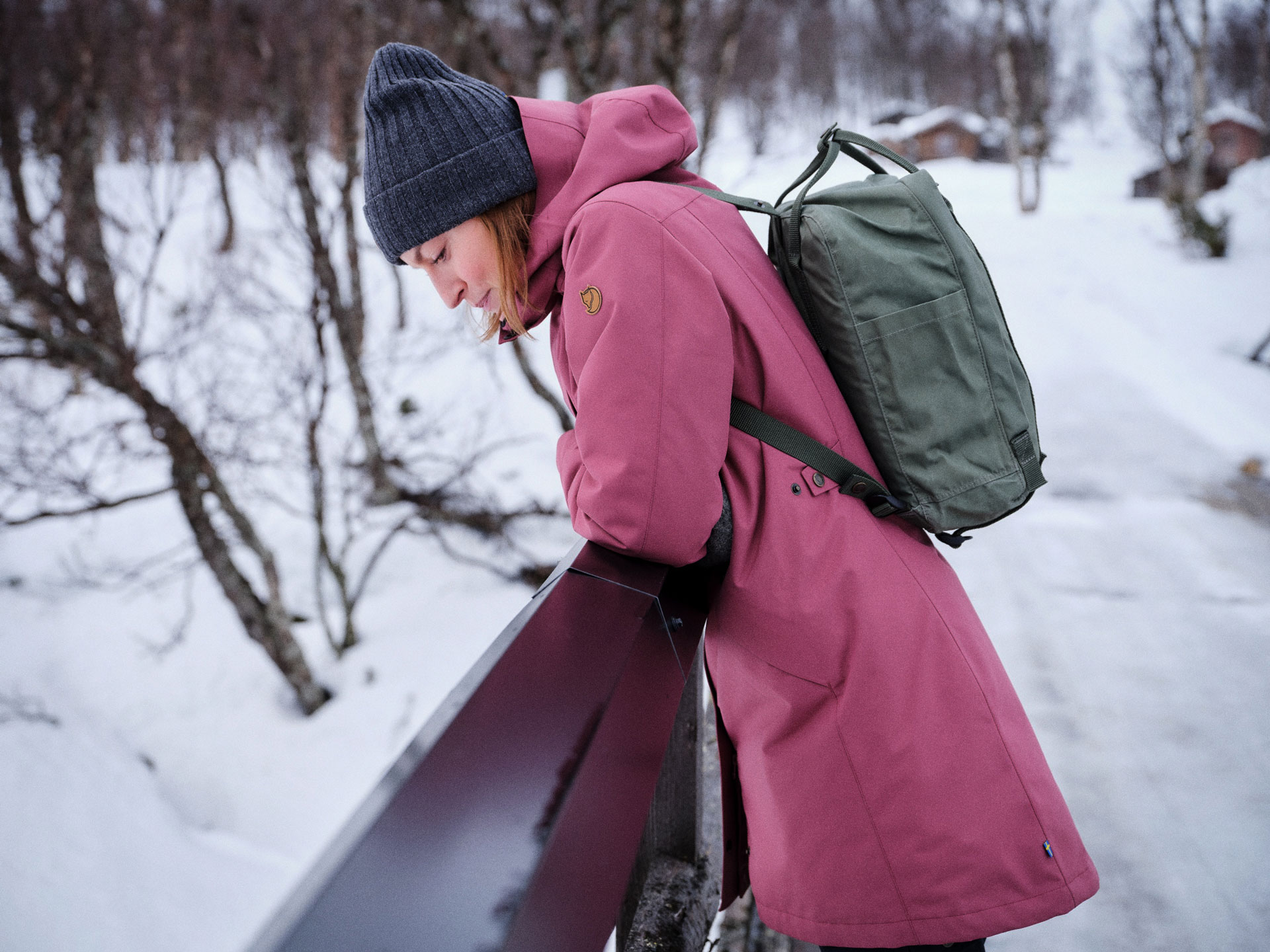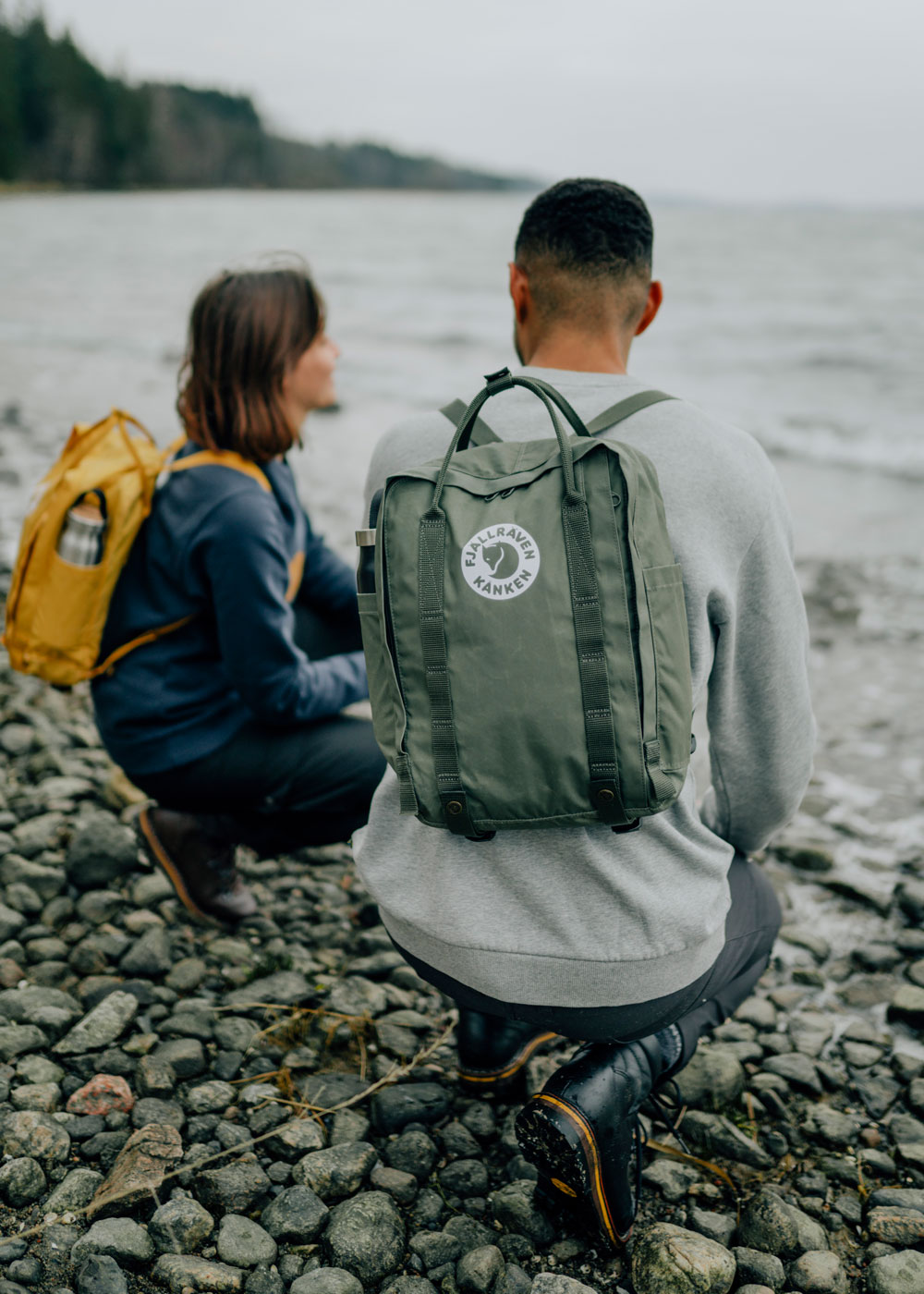They don’t really come much more iconic than the Kånken, do they? Whether you’re walking about an outdoorsy trade show in Munich, strolling down the high street, or chilling outside in the local park, Fjällräven’s undeniably classic backpack is about as recognisable as they come.
Never a brand to just sit on their laurels and let a famous bit of kit speak for itself though, Fjällräven are always looking at cool ways to reinvent the wheel and tell new stories with their products. Take the Tree-Kånken, for example. What is it? Well, in short, it’s a new addition to the Kånken range made from an innovative wood-based fabric that marks a move away from fossil-fuel based fabrics.
The main material and lining of the Tree-Kånken is made from Pine Weave. Pine Weave is a new plant-based fabric made from spruce and pine trees that are grown sustainably up in the northern part of Sweden.
“A new plant-based fabric made from spruce and pine trees that are grown sustainably”
Yes, that’s right, the ‘tree’ in ‘Tree-Kånken’ isn’t just for show. It is, instead, an extremely knowing nod of the head to where the bag comes from and what it’s made of. The outside used sustainably in a bag made for the outside, you say? We like it.
The coating on the Tree-Kånken is a combination of water-based polyurethane and wax that enhances durability and water resistance. This part of the production also means that every Tree-Kånken will go on to develop a unique worn-in patina that develops over time. It’s maybe a slightly cliche saying but these things will age like a fine wine.
If you’re the type of person who likes to stay up late watching old episodes of ‘How It’s Made’ on YouTube (who isn’t, to be fair), you might be more than a little curious to read this next bit. Basically, it all starts with the wood; a future-thinking sustainable alternative to non-renewable fossil-based raw materials.


The wood is then boiled into a pulp, and dried into cellulose sheets. The sheets are then chemically dissolved in a closed system to create liquid cellulose. This cellulose mixture is then pushed through spinnerets , and lyocell fibres emerge. The lyocell fibres are washed, dried, spun into yarn and then woven into fabric.
This lyocell fabric is then used to build the Tree-Kånken backpack. Simples.
The Tree-Kånken is a tribute to the first ever Kånken. Not just in terms of its design, but in the sense that it’s clearly been created to help solve a problem. Whereas the first Kånken was built to tackle the growing problem of back pain among schoolchildren, the Tree-Kånken is about exploring viable alternatives to fossil-based materials. All in all, it’s an excellent bit of kit.




You May Also Like
5 of the Best Environmental Documentaries
The Fjällräven Classic | Conquering the King’s Trail in Sweden
The 2 Minute Foundation | How We Can Clean Up The Planet In Just 120 Seconds

